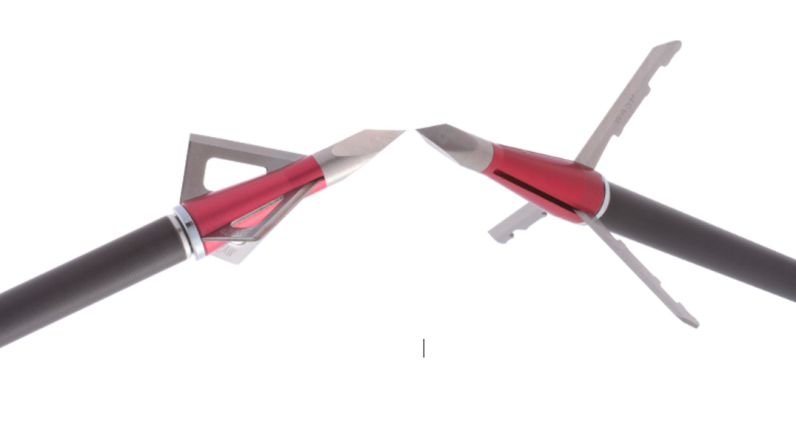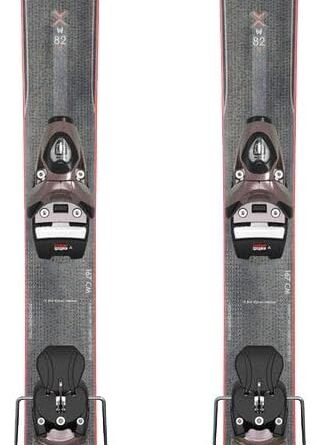
Do you ever find yourself wondering what the difference is between fixed-blade and mechanical broadheads for arrows? Well, you’re in luck because this article is here to help you understand the pros and cons of both types. Whether you’re a seasoned archer or just starting out, it’s important to know the ins and outs of these broadheads to make the best choice for your needs.
Curious to learn more? In this article, we will dive into the advantages and disadvantages of fixed-blade and mechanical broadheads for arrows. You’ll discover the various factors to consider, such as accuracy, penetration, and ease of use. By the end, you’ll have a clear understanding of which type of broadhead is right for you and your archery adventures. So stay tuned for valuable insights and expert advice on this topic! Introduction
When it comes to hunting with arrows, the choice of broadheads is crucial. Broadheads are the tips of arrows that are designed to inflict maximum damage on the target. There are two main types of broadheads: fixed-blade and mechanical. In this article, we will explore the pros and cons of both types, helping you understand which one is best suited for your needs.
Understanding Fixed-Blade Broadheads
Definition of Fixed-Blade Broadheads
Fixed-blade broadheads, as the name suggests, have blades that are permanently fixed in the open position. These broadheads are usually made of steel and come in various shapes and sizes. The most common designs include the three-blade, four-blade, and two-blade models. Fixed-blade broadheads are known for their simplicity and reliability.
Design and Construction of Fixed-Blade Broadheads
Fixed-blade broadheads are traditionally constructed using a single piece of steel. The blades are sharp, durable, and have a consistent cutting edge. The simplicity of their design allows for easy resharpening and maintenance. Some fixed-blade broadheads also have replaceable blades.
Advantages of Fixed-Blade Broadheads
One of the main advantages of fixed-blade broadheads is their reliability. Since the blades are permanently fixed, there is no risk of mechanical failure during the shot. This makes them perfect for hunters who prefer a robust and dependable broadhead.
Fixed-blade broadheads also tend to penetrate better than mechanical broadheads. The fixed blades can cut through hide, bone, and muscle with ease, ensuring a deep and lethal wound. They are especially effective for large game animals.
Disadvantages of Fixed-Blade Broadheads
One of the main disadvantages of fixed-blade broadheads is their flight characteristics. Due to their fixed design, they can be affected by wind, causing them to deviate from their intended path. This can lead to accuracy issues, especially on long-distance shots.
Another disadvantage of fixed-blade broadheads is their larger cutting diameter. While this can be an advantage in terms of creating a wide wound channel, it can also result in less penetration power. If the broadhead encounters heavy bone or thick hide, it may not penetrate as deep as desired.
Understanding Mechanical Broadheads
Definition of Mechanical Broadheads
Mechanical broadheads, also known as expandable or deployable broadheads, have blades that remain closed during flight and open upon impact. These broadheads are designed to expand and create a larger cutting diameter upon entry, maximizing the potential for a lethal hit.
Design and Construction of Mechanical Broadheads
Mechanical broadheads consist of a ferrule, blades, and a mechanism that allows the blades to expand upon impact. The blades are usually made of stainless steel or a similar material. The design allows the broadhead to fly more accurately due to reduced wind drag.
Advantages of Mechanical Broadheads
One of the main advantages of mechanical broadheads is their flight characteristics. Due to their closed design during flight, they experience less wind resistance and tend to fly more accurately than fixed-blade broadheads. This is especially beneficial for long-distance shots where precision is vital.
Mechanical broadheads also offer a smaller cutting diameter during flight, which helps with penetration. Upon impact, the blades deploy and create a larger cutting diameter, increasing the chances of a successful hit. This can be particularly advantageous when hunting small game or animals with thick hides.
Disadvantages of Mechanical Broadheads
The main disadvantage of mechanical broadheads is their mechanical complexity. The mechanism that allows the blades to expand can be prone to failure or malfunction. If the blades fail to open upon impact, the broadhead may not deliver the desired results. This is why it is crucial to choose a reliable and well-designed mechanical broadhead.
Another disadvantage is that mechanical broadheads do not penetrate as well as fixed-blade broadheads. The blades are often thinner and less sturdy, which can result in reduced penetration power, especially when encountering tough tissue or bone.
Comparison of Fixed-Blade and Mechanical Broadheads
Now that we have explored the individual characteristics of fixed-blade and mechanical broadheads, let’s compare them in various aspects to help you make an informed decision.
Differences in Flight Characteristics
Fixed-blade broadheads typically experience more wind resistance and can be affected by crosswinds. This can lead to less accuracy, especially on longer shots. On the other hand, mechanical broadheads have better flight characteristics, thanks to their closed design during flight.
Differences in Penetration Power
Fixed-blade broadheads generally have better penetration power due to their sturdier blades and larger cutting diameter. They are more suitable for larger game animals and situations where deep penetration is required. Mechanical broadheads, although they offer a smaller cutting diameter during flight, may not penetrate as deeply due to their thinner blades.
Differences in Cutting Diameter
Fixed-blade broadheads have a larger cutting diameter, providing a wider wound channel upon impact. This can be advantageous for creating more damage and increasing the chances of a lethal hit. Mechanical broadheads start with a smaller cutting diameter during flight and expand upon impact, increasing the potential for a successful hit.
Differences in Wound Channel
Fixed-blade broadheads, with their larger cutting diameter and robust blades, often create a wider and more substantial wound channel. This aids in blood loss and increases the chances of a clean kill. While mechanical broadheads also create a wide wound channel, there is a greater risk of reduced penetration, which may affect the overall efficiency.
Differences in Accuracy
Mechanical broadheads tend to offer better accuracy due to reduced wind resistance and consistent flight characteristics. Fixed-blade broadheads, while still reliable, can be affected by crosswinds and may require additional adjustments to ensure accuracy.
Differences in Price
In general, fixed-blade broadheads tend to be more affordable than mechanical broadheads. Mechanical broadheads often require more intricate designs and mechanisms, leading to a higher price point. However, both types come in various price ranges, and quality should always be a priority over cost.
Factors to Consider when Choosing Broadheads
Now that we have examined the differences between fixed-blade and mechanical broadheads, it’s important to consider several factors before making a decision.
Type of Game and Hunting Style
Consider the type of game you will be hunting and your preferred hunting style. For larger game animals or situations that require deeper penetration, fixed-blade broadheads may be the better choice. If you are targeting smaller game or prefer a more accurate shot, mechanical broadheads can be a viable option.
Bow Setup and Arrow Velocity
The setup of your bow and the velocity of your arrows can affect the performance of broadheads. Fixed-blade broadheads, with their larger cutting diameter and robust blades, may be more suitable for higher velocity arrows. Mechanical broadheads, with their enhanced flight characteristics, can provide better accuracy with slower arrows.
Skill Level and Experience
Consider your skill level and experience as a hunter. Fixed-blade broadheads require less complicated setup and maintenance, making them more suitable for beginners. Mechanical broadheads, although offering advantages in flight and accuracy, may require more experience and practice to ensure reliable performance.
Budget and Cost Factors
Take into account your budget and the cost of broadheads. While fixed-blade broadheads are generally more affordable, there are also higher-end models available. Mechanical broadheads, although pricier, can offer superior flight characteristics and accuracy, but quality should always be a priority over cost.
Hunting Regulations and Requirements
Always check the hunting regulations and requirements of your specific area. Some states or provinces have restrictions on the use of certain types of broadheads. Make sure you are aware of any limitations before making a purchase.
Pros and Cons of Fixed-Blade Broadheads
Advantages of Fixed-Blade Broadheads:
-
Reliability: Fixed-blade broadheads are known for their robustness and dependability. With no mechanical components, there is minimal risk of failure during the shot.
-
Penetration Power: Due to their sturdier blades and larger cutting diameter, fixed-blade broadheads offer better penetration power, making them suitable for larger game animals.
Disadvantages of Fixed-Blade Broadheads:
-
Flight Characteristics: Fixed-blade broadheads can be affected by crosswinds, leading to accuracy issues, especially on long-distance shots.
-
Cutting Diameter: Their larger cutting diameter can result in less penetration power when encountering heavy bone or thick hide.
Pros and Cons of Mechanical Broadheads
Advantages of Mechanical Broadheads:
-
Flight Characteristics: Mechanical broadheads offer better flight characteristics, thanks to their closed design during flight. This can enhance accuracy, especially on longer shots.
-
Cutting Diameter: Starting with a smaller cutting diameter during flight and expanding upon impact, mechanical broadheads increase the potential for a successful hit.
Disadvantages of Mechanical Broadheads:
-
Mechanical Complexity: The mechanism that allows the blades to expand can be prone to failure or malfunction. Choosing a reliable and well-designed mechanical broadhead is crucial.
-
Penetration Power: Mechanical broadheads, with their thinner blades, may not penetrate as deeply as fixed-blade broadheads when encountering tough tissue or bone.
Conclusion
Choosing between fixed-blade and mechanical broadheads for arrows is a decision that should be based on various factors, including your hunting style, game type, bow setup, skill level, and other considerations. Both types have their pros and cons, and ultimately, the choice depends on your specific requirements and preferences. By understanding the differences outlined in this article, you can make an informed decision and maximize your chances of a successful hunt. Happy hunting!

This image is property of i.ytimg.com.






